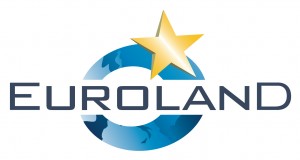Today, at various degrees, the EU has 3 legislative bodies: the Council, the European Parliament and the Commission. That’s a lot for a political entity already made complex by its multinational structural.
In a democracy, simple solutions have appeared to be the most sustainable and satifactory ones. The first reason is that simplicity makes democracy possible. Indeed complex institutional architectures are to the detriment of citizens who cannot understand the functioning mechanisms and must therefore trust the so-called “experts” in order to know who decides and how. This is the case of the EU system today, in both its legislative and executive functions. Today we will deal with the legislative one.
Co-decision, right of initiative of the Commission, swing-wing majorities, manyfold advisory bodies (ESC, Committee of Regions…), committees of all sorts,… to make a long story short, nowadays, no one no longer knows how European laws are made. Such situation is rather annoying, especially from a democracy point of view, and especially given the impact these laws (directives) have on people’s every day life.
There is at least one good news: everyone now agrees that things cannot go on like this forever. From Convention to European Parliament, from Commission to Council, from national parliaments to experts of all sorts, the EU “village” is growing restless to solve the gap between European practice and democratic aspiration, between inter-institutional games and operational efficiency, between bureaucracy and politics.
But of course, in the absence of any European political leadership, each one very honestly estimates that the others’ competences or prerogatives are at the origin of all this confusion and inefficiency. And thus goes on the internal war started in the 90’s: each one trying to grasp some of the neighbour’s power. Human indeed, but suicidal given the trends growingly agitating the European public opinion.
So what could be tomorrow’s European legislative power? Let’s be clear :
1. neither the experts nor the European institutions can bring a democratic and efficient answer. Their world is disconnected from contemporary EU political reality and they are lost in the meanderings of a machine they themselves no longer really understand.
2. a good solution must be simple to be understood by citizens, establish clear responsibilities (as the only way to implement some democratic sanction) and disregard selfish concerns of such or such institution (they are instruments designed to serve; not masters designed to give orders).
3. in order to be simple, the legislative power can no longer be fragmented among different institutions; such fragmentation results in a proliferation of procedures of co-decision, negociation, compromise,… making decision-making processes completely opaque for 99% of the citizens.
4. in order to be legitimate, it should incorporate the 4 components of the European identity: citizen, region, nation and Europe. And because in order to be simple it should not be fragmented, rather than try to create one institution for each identity-level, try to create as few institutions as possible by integrating as much as possible the 4 identity-levels.
5. in order to be efficient, the duplication of functions (a structural frame of inter-institutional conflict) should be avoided. This requires to be careful that each field of competence is scrupulously separated from the others whenever there is a shared function, in order to avoid the emergence of manifold conflict-solving procedures which in the end deprive from a democratic power made “technical”.
Given these good resolutions, what are we heading for ?
. To begin with, for differenciating between two fields of competence :
. integrated or common policies, i.e. those where QMV applies
. inter-governmental policies, i.e. those where unanimity applies.
In the second case, the legislative power must be in the hands of the Member-States as they are the actors of these policies.
In the first case, the legislative power must be common and integrated, just like the policies it is in charge of.
. Then, for inventing if possible one single and common legislative institution likely to integrate as much as possible the 4 identity-levels: it is necessarily a directly elected Parliament which the citizen fully identifies with
. The European identity should be expressable as such politically; and this requires the creation of a trans-European electoral dimension at both national and regional levels
. Eventhough the region/nation question varies a lot from one territory to the other, it can be considered that it belongs to each people to decide upon how it wishes to see its identity represented (in its two national/regional aspects) within a European common legislative body.
Thus a single legislative institution is sketching, that integrates the 4 components, i.e. a unicameral European Parliament elected as follows:
. 50% of the deputies come from a proportional representation of trans-European lists in a single electoral constituency: the EU
. 50% of the deputies are elected in the national frame, either by proportional or majority voting system, by list or district, by regional or national ballot – if the Germans prefer to be represented by the Länders while the Dutch prefer the national level, Europe does not have to decide for them; on the contrary. Each people can arbitrate alone its choice between regional or national identity.
This would enable to do without the Committee of Regions and without a second chamber. In a Europe full of national and regional parliaments, it is not necessary to multiply the chambers at European level. Otherwise, in each field of competence, the European Parliament owns the right of initiative.
Operationaly speaking, the European Parliament is stabilized in one single capital for obvious reasons of efficiency and visibility: Brussels. But a revisited Brussels, which has taken part to the geographic reorganisation of EU institutions, no longer a centralizing capital but one component of the network of European capital-cities which heart (the Euro-Ring) is made up namely of London (European Inter-Governmental Executive Body), Paris (Europeanc Common Integrated Executive Body), The Hague (Court of Justice) and Frankfurt (Central Bank).


 LEAP2040 Toutes les informations et archives Europe2040
LEAP2040 Toutes les informations et archives Europe2040


